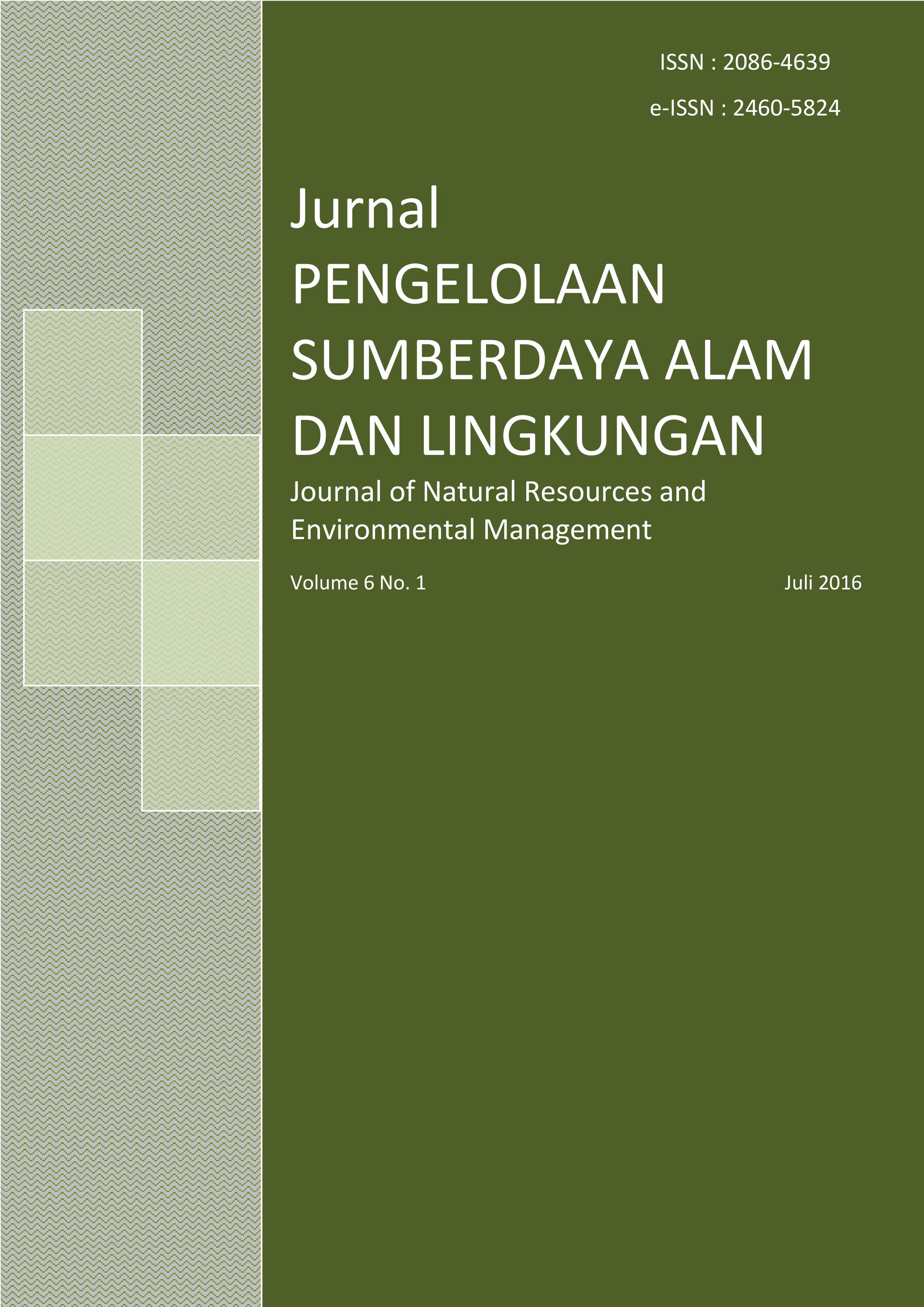MODEL PENGEMBANGAN KEBIJAKAN INTEGRASI SISTEM MANAJEMEN MUTU DAN LINGKUNGAN (STUDI KASUS KAWASAN INDUSTRI JABABEKA, CIKARANG, BEKASI)
Abstract
References
Adiatmojo G. D., R. S. P. Sitorus, H. Hardjomidjojo, E. Rustiadi, 2008. Model kebijakan pengambangan kawasan transmigrasi berkelanjutan di lahan kering. Disertasi. Program Studi Pengelolaan Sumberdaya Alam dan Lingkungan. Sekolah Pascasarjana, Institut Pertanian Bogor, Bogor.
Bourgeois R., F. Jesus, 2004. Participatory Prospective Analysis : Exploring and Anticipating Challenges with Stakeholders. CAPSA Monograph , United Nation.
Byl R, Trainmar, Guadeloupe, 2002. Strategic planning using scenario. IAME 2002 Conference 13-15 November , Panama City.
Fauzi A., S. Anna, 2002. Evaluasi status keberlanjutan pembangunan perikanan : aplikasi pendekatan rapfish. Pesisir dan Lautan 3 (4).
Guo L., X. Hu, 2011. Green technological trajectories in ecoindustrial park and the selected environment. The case study of lubei group and the guitang group. Journal of Knowledge Based Innovation in China 3 (1).
Human BA., A. Davies, 2010. Stakeholder consultation during the planning phase of scientific programs. Marine Policy 34 (3).
Kavanagh P., T. J. Pitcher, 2004. Implementing microsoft excel software for rapfish : a technique for the rapid appraisal of fisheries status. Fisheries Centre Research Reports 2 (12).
Lee MD, 2001. Determining the dimensionality of multidimensional scaling model for cognitive modelling. Journal of Mathematical Psychology 45 (1).
Marimin, 2013. Aplikasi Teknik Pengambilan Keputusan dalam Manajemen Rantai Pasok. IPB Pres, Bogor.
Nababan B. O., Y. D. Sari, M. Hermawan, 2007. Analisis keberlanjutan perikanan tangkap skala kecil di kabupaten tegal jawa tengah. J. Bijak dan Sosek KP 2 (2).
Napitupulu A. 2009. Pengembangan model kebijakan pengelolaan lingkungan berkelanjutan pada PT (persero) kawasan berikat nusantara. Disertasi. Program Studi Pengelolaan Sumberdaya Alam dan Lingkungan. Sekolah Pascasarjana, Institut Pertanian Bogor, Bogor.
Pitcher, T. J., D. Preikshot, 2001. Rapfish : a rapid appraisal technique to evaluate the sustainability status of fisheries. Fisheries Research 49 (2001), pp. 255-270.
Saaty, T. L. 2008. Decision making with the analytical hierarchy process. Int. J. Services Sciences 1 (1).
Schmoldt, D., J. Kangas, G. Mendoza, M. Pesonen, 2001. The analytic hierarchy process in natural resource and environmental decision making. The series managing forest ecosystems (1).
Schumann, S., 2010. Application of participatory principles to investigation of the natural world: an example from chile. Marine Policy 1 (34).
Sekaran U, 2006. Metodologi Penelitian Untuk Bisnis. Salemba Empat, Jakarta.
Setiawati, S., 2014. Pengembangan kebijakan eko-inovasi kawasan pusat penelitian ilmu pengetahuan dan teknologi, di kota tangerang selatan. Disertasi. Program Studi Pengelolaan Sumberdaya Alam dan Lingkungan. Sekolah Pascasarjana, Institut Pertanian Bogor, Bogor.
Supono S. 2009. Model kebijakan pengembangan kawasan pantai utara, jakarta secara berkelanjutan. Disertasi. Program Studi Pengelolaan Sumberdaya Alam dan Lingkungan. Sekolah Pascasarjana Institut Pertanian Bogor, Bogor.
Tjiptono F., A. Diana, 2001. Total Quality Management. Andi, Yogyakarta.
Authors
Authors who publish with this journal agree to the following terms:
- Authors retain copyright and grant the journal right of first publication with the work simultaneously licensed under a Creative Commons Attribution License that allows others to share the work with an acknowledgement of the work's authorship and initial publication in this journal.
- Authors are able to enter into separate, additional contractual arrangements for the non-exclusive distribution of the journal's published version of the work (e.g., post it to an institutional repository or publish it in a book), with an acknowledgement of its initial publication in this journal.
- Authors are permitted and encouraged to post their work online (e.g., in institutional repositories or on their website) prior to and during the submission process, as it can lead to productive exchanges, as well as earlier and greater citation of published work (See The Effect of Open Access).






